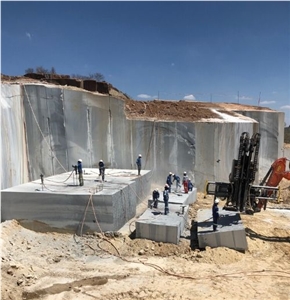Opening All-natural Prizes: Granite Quarries in South Africa Introduced
Revealing the Mysteries of Granite Quarrying: Where Toughness and Beauty Meet
The globe of granite quarrying is a world where the raw strength of nature assembles with human creativity to develop structures that stand the test of time with an air of sophistication. From the midsts of quarries to the meticulous polishing in workshops, the procedure of changing granite right into architectural marvels is a complicated dancing of practice and innovation. As we peer into the depths of this ancient craft, we start to reveal the surprise intricacies that shape the extremely essence of our developed setting.
The Beginnings of Granite Quarrying
In the record of building background, the beginnings of granite quarrying are shrouded in a tapestry of ancient craftsmanship and geological marvels. Dating back to ancient Egypt and Mesopotamia, the extraction of granite from quarries marked the beginning of a journey that would eventually result in the development of a few of the world's most famous frameworks.
Granite quarrying's origins can be traced to the knowledgeable craftsmens that identified the rock's durability and aesthetic appeal. Through a combination of primitive tools and large resolution, these very early quarry employees uncovered granite blocks that would certainly become the building blocks of worlds.
As worlds evolved, so did the techniques of quarrying granite. The Romans, renowned for their design expertise, created sophisticated techniques for extracting granite to construct monoliths, holy places, and roadways that stood the test of time.
The legacy of these old quarrying techniques remains to shape modern style, with granite continuing to be a sign of strength and elegance in building and construction jobs around the globe. (granite quarries in south africa)
Tools of the Quarrying Profession
The development of granite quarrying techniques from old people to contemporary times highlights the crucial duty played by the devices of the quarrying sell shaping the industry's techniques. In ancient times, quarrying tools were primary, commonly including chisels, hammers, and wedges made from products like bronze or iron. These tools called for considerable manpower and time to remove granite blocks from quarries.

Additionally, the introduction of pneumatic tools and high-powered machinery has considerably decreased the physical labor needed in quarrying procedures, boosting employee safety and security and performance. As the quarrying market continues to innovate, the tools of the trade continue this page to be at the leading edge of driving progression and forming the future of granite removal.
Drawing Out Blocks of Granite
Using precision machinery and advanced techniques, the removal of granite obstructs from quarries has become a sophisticated process in the modern-day quarrying sector. The preliminary step involves recognizing the area and size of the granite deposit to determine one of the most effective extraction method. As soon as an appropriate site is selected, the removal procedure begins with the exploration of openings for the positioning of explosives. Regulated blasting techniques are after that utilized to disintegrate the granite right into workable areas.

Polishing and Ending Up Strategies
To accomplish a perfect surface on granite blocks, skilled craftsmens utilize a series of meticulous sprucing up and completing techniques. After the first extraction and shaping procedures, the granite blocks undertake a complete polishing stage to improve their natural appeal and toughness. One common method made use of in polishing granite is ruby abrasion, where industrial rubies are utilized to grind and polish the rock to a smooth finish. This procedure not only develops a shiny surface area however also ensures harmony in color and structure throughout the granite block.
In addition to sprucing up, ending up techniques are put on more refine the granite's look. These strategies might include flaming, refining, or cleaning, each offering unique structures and coatings to match different aesthetic choices. Flaming, for circumstances, entails exposing the granite surface to high temperature levels to create a harsh, distinctive coating, ideal for outside applications where slip-resistance is vital. Refining, on the other hand, gives a matte surface that is smooth to the touch, perfect for interior countertops and floor covering. By very carefully selecting and applying these brightening and completing methods, artisans can change raw granite obstructs right into splendid pieces that display both strength and beauty.

Ecological Effect and Sustainability
With the growing focus on environmental awareness in the market, granite quarrying techniques are progressively looked at for their effect on all-natural sources and lasting sustainability. Additionally, see it here the transport of granite from quarries to processing facilities produces carbon discharges, further adding to environmental degradation.
To mitigate these impacts and make sure sustainability in granite quarrying, industry stakeholders are taking on different actions. Applying innovative innovations to minimize power usage and water usage, reclaiming quarried land for eco-friendly reconstruction, and advertising accountable Learn More sourcing techniques are some techniques being utilized. Certifications such as the Forest Stewardship Council (FSC) and the Management in Energy and Environmental Style (LEED) aid customers determine ecologically friendly granite items.
Final Thought
In final thought, granite quarrying is a procedure that calls for specialized tools and methods to extract blocks of granite and polish them to a high level of surface. While the environmental effect of quarrying can be significant, initiatives are being made to improve sustainability techniques in the industry. On the whole, granite quarrying is a fragile balance between using the stamina and elegance of this natural rock while lessening its effect on the atmosphere.